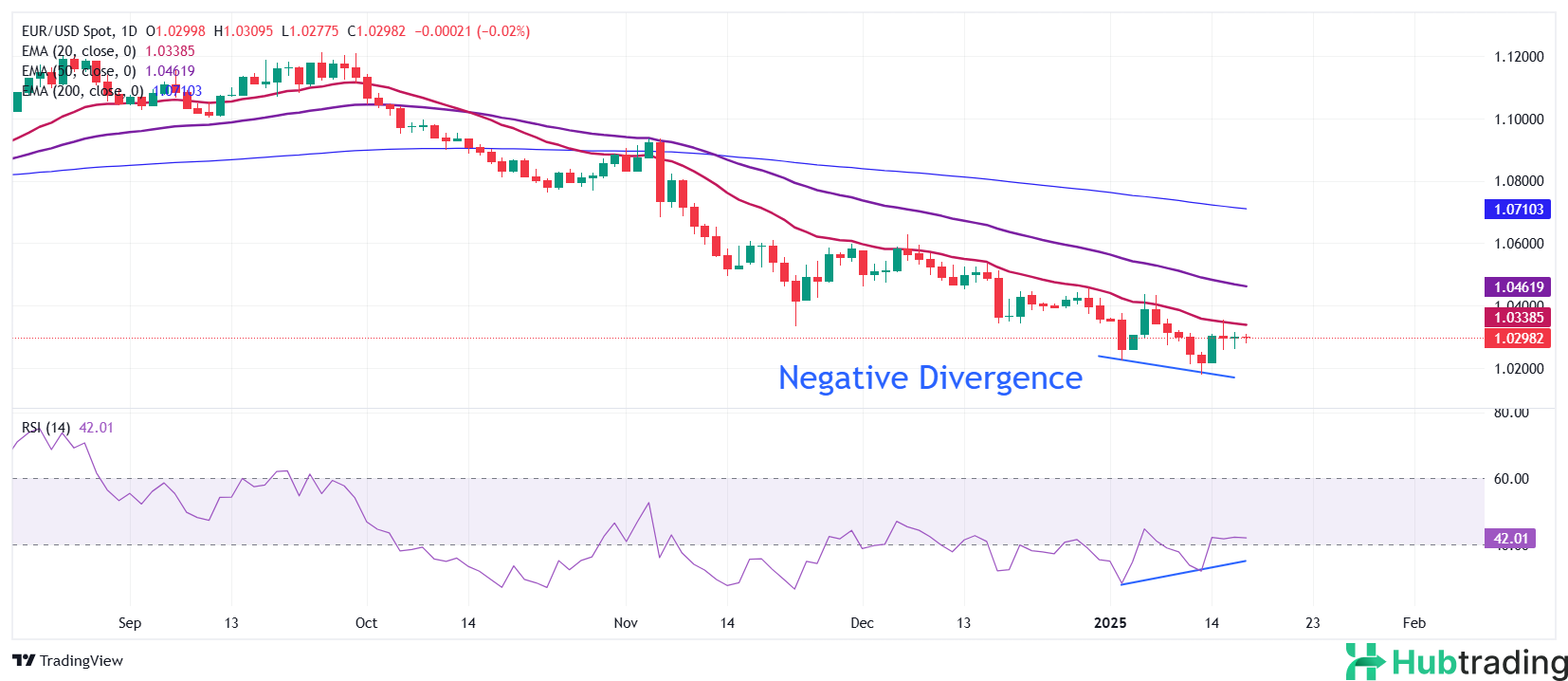EUR/USD trades cautiously within a narrow range near the critical 1.0300 level during Friday’s European session. The currency pair remains confined to Thursday’s trading range as investors shift their attention to the inauguration of US President-elect Donald Trump on Monday.
Market participants await Trump’s announcement of new economic policies, seeking fresh insights into the United States’ economic trajectory and the potential impact on global trade. Analysts speculate that Trump’s policies could drive inflation and economic growth while risking a global trade war.
During a Senate Finance Committee hearing on Wednesday, Trump’s Treasury pick, Scott Bessent, emphasized the urgency of reforming the current tax system to prevent a $4 trillion tax burden on the middle class. "Failure to renew and extend would result in economic calamity,” Bessent warned. He also endorsed Trump’s protectionist stance, arguing it would counteract unfair trade practices and bolster the US’s negotiating leverage.
Meanwhile, the US Dollar Index (DXY), which measures the Greenback against six major currencies, edges higher while maintaining support near 109.00. The US Dollar remains resilient despite traders increasingly pricing in at least one interest rate cut by the Federal Reserve (Fed) this year. This dovish outlook follows a decline in the core Consumer Price Index (CPI), which excludes food and energy prices, to 3.2% in December — the lowest level in over four years.
Daily Market Movers: EUR/USD Faces Pressure Amid ECB Dovish Bets
-
EUR/USD remains under pressure as the Euro (EUR) struggles with a weak outlook, driven by firm dovish bets on the European Central Bank (ECB). Traders are pricing in a 25 basis points (bps) interest rate cut at each of the next four ECB policy meetings, reflecting concerns about the Eurozone’s economic trajectory and controlled price pressures.
-
ECB officials appear comfortable with further rate cuts. Minutes from the ECB’s December meeting, released on Thursday, revealed extensive discussions on the pace of policy easing this year. Policymakers debated a larger-than-usual 50 bps rate cut to mitigate downside growth risks heightened by global and domestic political uncertainties. Ultimately, the ECB opted for a 25 bps cut.
-
A notable shift in ECB communication emerged, moving from targeting a “return of inflation to 2%” to ensuring inflation remains “sustainably at target.” The minutes also highlighted growing concerns among officials about the risk of inflation undershooting the central bank’s 2% target.
-
Concerns over EUR/USD falling to parity have intensified as Donald Trump’s return to the White House looms. Trump is expected to increase import tariffs, a move likely to negatively impact the European Union’s (EU) export sector, further pressuring the Euro.
Technical Analysis: EUR/USD Consolidates Around 1.0300

EUR/USD remains range-bound near 1.0300 on Friday, recovering from Monday’s two-year low of 1.0175. The pair shows signs of a rebound, supported by divergence between momentum and price action. The 14-day Relative Strength Index (RSI) formed a higher low around 35.00, even as the pair posted lower lows.
Despite the recovery, the overall outlook for EUR/USD remains bearish, with all short-to-long-term Exponential Moving Averages (EMAs) trending downward.
On the downside, Monday’s low of 1.0175 serves as a crucial support level. On the upside, the January 6 high of 1.0437 stands as a significant resistance zone for Euro bulls.





